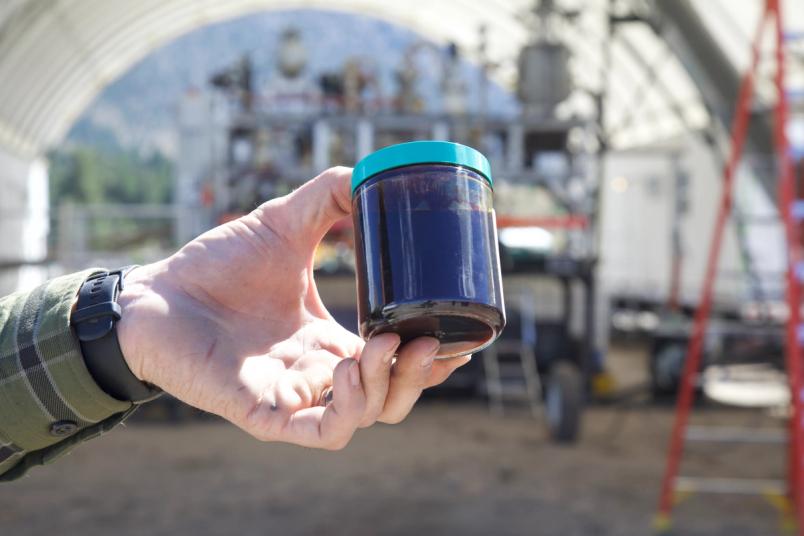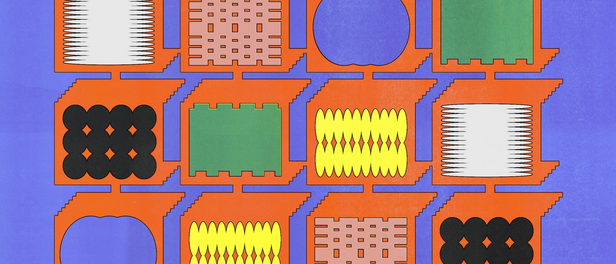Sustainability Week at Figma: An inside look at our climate efforts

As part of our first-ever Sustainability Week, we’re sharing an update on our climate investments—and some of the ways Figma helps other companies build green initiatives of their own.
Similar to charcoal, biochar is a stable form of carbon made from organic material waste like corn husks, wood chips, or manure (also known as biomass). Charm Industrial uses a process called “fast pyrolysis” to convert biomass into biochar and bio-oil, both of which sequester carbon. Biochar benefits soil, and the latter can be injected deep underground in bio-oil sequestration.
This January, we hosted our first-ever Sustainability Week: five days of programming to help make Figma a more sustainable company at both the individual and organizational level. To kick things off, Praveer Melwani, Chief Financial Officer at Figma, sat down for a conversation with Peter Reinhardt, Chief Executive Officer at climate tech company Charm Industrial, about their carbon removal technology and its impact. In San Francisco, Charm Industrial invited our team to tour its facilities to see how the company converts organic waste, known as biomass, into carbon-rich biochar and bio-oil that can then be pumped deep underground for permanent storage.


To get teams across Figma talking, we rounded up some of our favorite resources on how to address the climate crisis: documentaries like Chasing Coral, books like All We Can Save, and YouTube channels like Climate Town. We also displayed trivia questions across screens in our global offices, brought farm fresh goods from local growers to our San Francisco and New York hubs, and launched a sustainability wiki on Notion to share how we create environmentally conscious workplaces. And for those who want to give back, we pulled together a curated list of organizations to support, all of which are eligible for our donation-matching program.
While climate change can feel insurmountable, holding discussions and sharing the work being done—by our team and our larger community—has inspired us to tackle what we can control: addressing carbon emissions, reducing waste, and conserving energy.
An update on our climate commitments
While Sustainability Week is new, our commitment to climate action is decidedly not: In 2021, a group of employees started exploring the world of carbon accounting and offsets. A year later, they became our official Net Zero social impact group (SIG) For companies of a certain size, carbon neutrality in the here and now isn’t out of reach—it’s just short-sighted. With our $500,000 investment in carbon removal via Watershed, the enterprise climate platform and marketplace, Figma ensures that vanguard technologies the future depends on will continue to scale.When net zero isn’t enough: Deepening our commitment to climate action by investing in the future
Our Net Zero SIG has led Figma to sign the Climate Pledge, setting our intention to become net zero by 2040. To that end, we’ve been working with the sustainability platform Watershed to measure our annual carbon footprint and invest in carbon removal projects through Watershed’s marketplace. In 2024, we made our biggest investment yet, purchasing $750,000 in offset and avoidance credits via Watershed’s marketplace platform.
In 2024, we made our biggest investment yet, contributing $750,000 in offset and avoidance credits via Watershed.
Our climate investment portfolio For companies of a certain size, carbon neutrality in the here and now isn’t out of reach—it’s just short-sighted. With our $500,000 investment in carbon removal via Watershed, the enterprise climate platform and marketplace, Figma ensures that vanguard technologies the future depends on will continue to scale.When net zero isn’t enough: Deepening our commitment to climate action by investing in the future
Additionally, we’ve continued to invest in Charm Industrial’s bio-oil sequestration. In his conversation with Praveer, Charm Industrial CEO Peter Reinhardt discussed some of the challenges and signs of progress in the carbon removal industry, as well as what companies like Figma can do at both the corporate and employee level to contribute to meaningful change. “The companies that ultimately end up in the strongest position to reach net zero are the ones that have gone very deep into a technical understanding of what the levers are for a good climate outcome,” says Peter. He advised companies to plan several years ahead on their carbon accounting forecasts, and invest strategically in smaller suppliers to help them scale.
Recommended reading:
- What If We Get It Right? by Ayana Elizabeth Johnson
- The Grid by Gretchen Bakke, Ph.D.
- Paved Paradise by Henry Grabar
- How to Avoid a Climate Disaster by Bill Gates
- The Story of More: How We Got to Climate Change and Where to Go from Here by Hope Jahre
Recommended listening:
Recommended watching:

On the individual level, we’ve encouraged teams across Figma to take simple actions. Transitioning to electric for necessities like stoves, water heaters, and cars can have a large impact: “If you buy green power, that will cut out half of the emissions in your life.” The key is to stay motivated and action-oriented. “There are a lot of things we can do to create a clean, abundant future,” says Peter.
At Figma, our sustainability efforts are a continuation of our commitment to innovation. We believe that by investing in novel climate technologies and the companies behind them, we can play a small role in helping them scale their operations, and make an even greater impact as time goes on.
How Figma customers are enacting change
As a team, we’ve been galvanized by customers using Figma to build new software, products, and experiences that take aim at climate change in a variety of ways. From a new plugin that Patagonia built to highlight their Worn Wear resale program, to Nuuly’s efforts to help more people rent their daily wardrobes, retailers are using Figma to pull more consumers into the circular economy and help reduce waste. (It’s estimated that 92 million tons of garments end up in landfills each year, with over 10% of that textile waste stemming from the U.S. alone.)
Within the automotive industry, Ford is broadening its portfolio of fully electric and hybrid-electric vehicles, and is using Figma to design its mobile app and in-vehicle applications. The company plans to expand its next generation of EVs and hybrid vehicles by offering a range of electrification options—designed to give customers options at lower prices and with longer battery ranges.
Plus, in a full-circle moment, Watershed itself uses Figma to put corporate sustainability metrics at the fingertips of those who can shift them. With Figma, Watershed’s product designers create consistent UX patterns, build realistic prototypes, and scope out minimum viable products. Designers, developers, and product partners are able to collaborate live to deliver the best possible product. “Because of tools like Figma, which facilitate collaboration, we were able to innovate quickly, shipping more than 90 new features and improvements in 2024,” says Hannah Hudson, Head of Design at Watershed.
Just as Figma has grown, our investments in sustainability efforts have grown over the years—and we’re excited to build on that momentum. We will continue to evaluate our carbon footprint, champion sustainability in our operations, and invest in technologies that address climate change head-on.
Related articles



